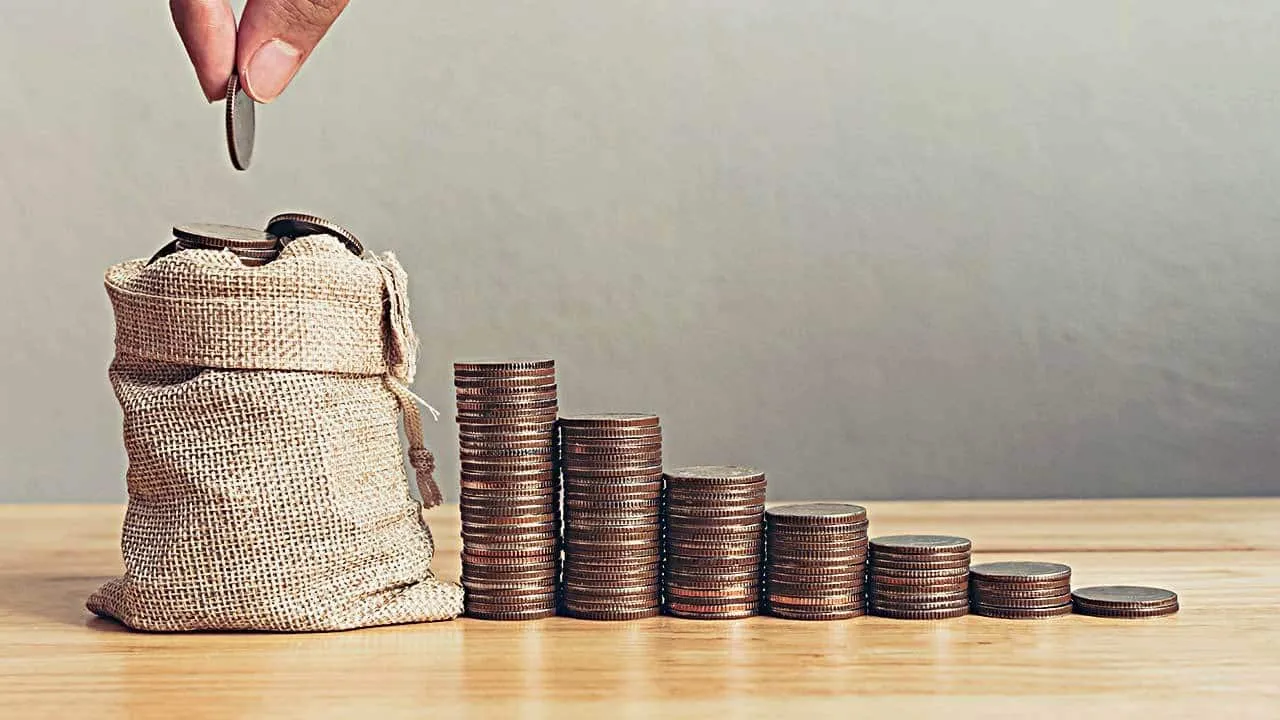Blog Content Overview
- 1 Introduction
- 2 A. Understanding Direct Tax
- 3 Income Tax
- 4 Principles of Computation of business income
- 5 Most Relevant Income Tax Provisions
- 6 Computation of PGBP (Profit and Gains from Business & Profession)
- 7 Business Tax Returns
- 8 Alternate Minimum Tax (“AMT”)
- 9 B. Understanding Indirect Tax
- 10 GST (Goods and Services Tax)
- 11 Types of GST
- 12 Composition Scheme in GST
- 13 Rates of GST
- 14 Returns under GST
- 15 Return filing under GST composition Scheme for Restaurants
- 16 Conclusion
- 17 Frequently Asked Questions (FAQ’s) about Tax and Returns for Restaurant
AI Summary
Navigating taxes and returns for restaurants in India involves understanding both Direct and Indirect Taxes. Direct Taxes primarily concern Income Tax, calculated under "Profits and Gains from Business or Profession," with applicable deductions and disallowances as per the Income Tax Act, 1961, including considerations for presumptive taxation under Section 44AD. Indirect Taxes mainly involve Goods and Services Tax (GST), with rates varying from 5% to 18% depending on establishment type and location. Compliance requires timely filing of returns such as GSTR-3B (monthly) and GSTR-4 (quarterly for composition scheme). Understanding these obligations ensures legal compliance and bolsters financial stability. Taxpayers with turnover exceeding ₹1 Crore may require a tax audit.
Exploring the complex landscape of taxation and returns for restaurants in India is crucial for compliance and financial health. Restaurants are subject to both Direct Taxes, like Income Tax, and Indirect Taxes, primarily the Goods and Services Tax (GST). Income is computed under the ‘Profits and Gains from Business or Profession’ category, with various deductions and disallowances applicable as per the Income Tax Act, 1961. GST rates for restaurants vary based on factors such as the establishment’s type and location, ranging from 5% to 18%. Compliance includes timely filing of returns, with forms like GSTR-3B required monthly and GSTR-4 quarterly for those under the composition scheme. Understanding these obligations ensures legal compliance and promotes financial stability.
Introduction
Every restaurant has to comply with some taxation regulations and also file its returns on a regular interval as required under the specific laws in India. Among others, the Income Tax Act, 1961 (“Act”) and the Goods and Service Tax, 2017 (“GST Act”) are the main governing regulations for taxation of restaurant business income. In this article we provide a detailed insight on Tax and Returns for a Restaurant in India.
Taxation in India is divided into two parts – A. Direct Tax and B. Indirect Tax.
Direct Tax is the tax that is levied and paid directly by the restaurant while, Indirect taxes are those taxes that are levied on goods or services. They differ from direct taxes because they are not levied on a person who pays them directly to the government, they are instead levied on products and are collected by an intermediary, the person selling the product. These taxes are levied by adding them to the price of the service or product which tends to push the cost of the product up.
A. Understanding Direct Tax
Income Tax
Income from restaurants is governed by ‘Profits and Gains of Business or Profession Chapter’ as provided under the Act. Section 2(13) of the Act has defined the term ‘Business’ as including any trade, commerce or manufacture or any adventure or concern in the nature of trade, commerce or manufacture. Section 2(36) states that ‘Profession’ includes vocation’ without defining what the profession means. Generally, the profession involves labour skills, education and special domain knowledge.
All the businesses, including the food industry, must have a PAN and TAN in the name of the business or in the name of the owner (in case of a Sole-Proprietorship) in whose name the transactions are to be carried out. PAN and TAN are two ten-digit different alphanumeric numbers provided by the IT Department. Every person who deducts or collects tax at the source has to get a TAN.
In case the business is set up in the form of a company or a LLP, there are different rates of tax applicable. In case of an individual the income from PGBP (defined hereinafter) shall form a part of the income of the assessee.
Principles of Computation of business income
Most Relevant Income Tax Provisions
- Section 28 of the Act states that –
The following income shall be chargeable to income-tax under the head “Profits and gains of business or profession” (“PGBP”) — 1) the profits and gains of any business or profession which was carried on by the assessee at any time during the previous year.
Along with specific provisions as detailed in Section 28(ii) to 28(vii) of the Act. - Section 41 “Profits chargeable to tax” of the Act deals with a situation where:
1) A loss, expenditure or trading liability has been incurred in the course of business or profession;
2) Allowance or deduction has been made in respect of such loss, expenditure or trading liability in the course of assessment; and
3) A benefit is subsequently obtained in respect of such loss, expenditure or trading liability by way of remission or cessation thereof.
In such a situation, the value of the benefit accruing to the assessee is deemed to be profits and gains of business or profession. - Section 176(3A) states that –
Where any business is discontinued in any year, any sum received after the discontinuance shall be deemed to be the income of the recipient and charged to tax accordingly in the year of receipt, if such sum would have been included in the total income of the person who carried on the business had such sum been received before such discontinuance - Any other incomes received during the course of business such as income from house property or rental income, bank interest, etc.
- Presumptive taxation –
Section 44AD of the Act states that in the case of an eligible assessee engaged in an eligible business, a sum equal to eight per cent of the total turnover or gross receipts of the assessee in the previous year on account of such business or, as the case may be, a sum higher than the aforesaid sum claimed to have been earned by the eligible assessee, shall be deemed to be the profits and gains of such business chargeable to tax under the head PGBP. However, eight percent shall be replaced with ―six per cent in respect of the amount of total turnover or gross receipts which is received by an account payee cheque or an account payee bank draft or use of electronic clearing system through a bank account during the previous year.
Here eligible business shall mean –
(i) any business except the business of plying, hiring or leasing goods carriages referred to in section 44AE; and (ii) whose total turnover or gross receipts in the previous year does not exceed an amount of 2 [two] crore rupees. - Deductions under Section 30 to 37 of the Act –
Deductions available from the income under the sections pertaining to rent, repairs, depreciation, additional depreciation (if applicable), deduction under section 32AC is available if actual cost of new plant and machinery acquired and installed by a manufacturing company during the previous year exceeds Rs. 25/100 Crores, as the case may be (in case the business is engaged in manufacturing), Non-corporate taxpayers can amortise certain preliminary expenses (up to maximum of 5% of cost of the project) (Subject to certain conditions and nature of expenditures), insurance premium paid, bonus or commission paid to employees, interest on borrowed capital, employer’s contribution to provident fund and gratuity fund, bad debts written off, securities transaction and commodities transaction tax paid etc. and other such deduction as may be applicable. - Disallowances –
There are some disallowances that have been specifically mentioned in the Act which shall not be eligible to be deducted from the income for the purposes of calculation of PGBP, some of them are wealth-tax or any other tax of similar nature shall not be deductible, Any sum payable to a resident, which is subject to deduction of tax at source, would attract 30% disallowance if it was paid without deduction of tax at source or if tax was deducted but not deposited with the Central Government till the due date of filing of return, Any sum (other than salary) payable outside India or to a non-resident, which is chargeable to tax in India in the hands of the recipient, shall not be allowed to be deducted if it was paid without deduction of tax at source or if tax was deducted but not deposited with the Central Government till the due date of filing of return etc.
We take care of all your restaurant taxation needs Let’s Talk
Computation of PGBP (Profit and Gains from Business & Profession)
Business Profit should be calculated through Profit & Loss Account. On the Credit side of Profit & Loss Account there are some Incomes which are tax free or not taxable under the head Business/Profession.
Balance as per P & L A/c
(+) Profit
(-) Loss Amount
Add Expenses claimed but not allowed under the Act
- All Provisions & Reserves (Provision for Bad Debt/Depreciation/Income)
- All Taxes (Except Income Tax, Wealth Tax etc.) except sales Tax,Excise
- Duty & Local Taxes of premises used for business.
- All Charities & Donations
- All personal expenses
- Any type of fine / penalty
- Speculative Losses
- All capital losses
- Any Difference in Profit & Loss Account
- Previous year expenses
- Rent paid to self
- All expenses related to other head of Income
- Payments made to the partner (in terms of salary, commission or any other way.)
- All capital expenses except scientific research
- Loss by theft
- Expenses on illegal business
- Rent for residential portion
- Interest on Income tax, TDS etc
Total of these Items is added to the profit or adjusted from loss
Business Tax Returns
A business tax return is an income tax return. The return is a statement of income and expenditure of the business. Any tax to be paid on the profits made by you is declared in this return. The return also contains details of the assets and liabilities held by the business. Items like fixed assets, debtors and creditors of business, loans taken and loans were given are declared here.
- In the case of a sole proprietor, business income and other personal income like salary, income from house property and interest income have to be stated on the same return. If your total income before deductions is above the basic taxable limit it is mandatory to file the income tax return irrespective of profit or loss in the business. The basic taxable limit is Rs. 2.5 lakh.
- For companies, firms and Limited Liability Partnership (LLP) a business tax return has to be filed irrespective of profit or loss. Even if there are no operations undertaken, a return has to be filed. Companies, firms, and LLPs are taxed at a rate of 30%.
Every taxpayer whose turnover is above Rs. 1 Crore in case of businesses and Rs. 50 Lakh in case of professionals is required to get a tax audit done. The taxpayer has to appoint a Chartered Accountant to audit their accounts. A tax audit is necessary even when the profits declared by you is less than 8% (6% on Digital transactions) of the turnover in case of presumptive taxation.
Additionally, surcharge is applicable in the following cases –
Health & education Cess: Further 4% of income tax calculated and applicable surcharge will be added to the amount of total tax liability before this cess.
Alternate Minimum Tax (“AMT”)
AMT provisions are applicable to following taxpayers:
- All non-corporate taxpayers; and
- Taxpayers who have claimed deduction under:
- Chapter VI-A under the heading “C. — Deductions in respect of certain incomes’ – These deductions are under Section 80H to 80RRB provided in respect of profits and gains of specific industries such as hotel business, small scale industrial undertaking, housing projects, export business, infrastructure development etc. However, deduction under Section 80P which provides deduction to co-operative societies is excluded for this purpose; or
- Deduction under Section 35AD – While capital expenditure in assets usually qualify for depreciation year on year, under this Section 100% deduction is allowed on capital expenditure incurred for specified business such as operation of cold chain facility, fertiliser production etc; or
- Profit linked deduction under Section 10AA – Deduction of profit varying from 100% to 50% is provided to units in Special Economic Zones (SEZs).
Based on the above, it can be concluded that AMT provisions are applicable only to those non-corporate taxpayers having income under the head ‘Profits or Gains of Business or Profession’. Further, as mentioned above AMT provisions are applicable only when normal tax payable is lower than AMT in any financial year.
Minimum Alternate Tax (“MAT”)
Alternatively, all the companies (including foreign companies) are required to pay minimum alternate tax at the rate of 15% on book profits if the tax calculated as per above rates are less than 15% of book profits.
Returns under the Act
- ITR -3 is to be filed by individuals and HUFs having income from PGBP
- ITR -4 SUGAM for Individuals, HUFs and Firms (other than LLP) being a resident having total income upto Rs.50 lakh and having income from business and profession which is computed under sections 44AD, 44ADA or 44AE
- ITR -6 is to be filed by companies other than companies claiming exemption under section 11 of the Act.
All restaurants having business in the individual capacity shall file the ITR -3 while those in the capacity of the company shall be required to file ITR -6.
B. Understanding Indirect Tax
Tax concepts under Indirect Tax include GST.
GST (Goods and Services Tax)
It was introduced in July 2017. What this tax regime does is it unifies all the taxes that the restaurant and customers had to pay earlier. The Minimum turnover is required to be Rs 20 Lakhs for registration in GST.
Therefore, this variety of taxes is now just consolidated into State Goods and Services Tax (SGST) and Central Goods and Services Tax (CGST). Moreover, GST registration is a state-centric matter; therefore, if the restaurants have different outlets, each outlet must be registered separately under that particular state. Furthermore, there are different tax slabs as well for different restaurants. The restaurant GST rates are laid down below:
- Category 1: For the restaurants without an AC or liquor license
- Category 2: For the restaurants with AC
- Category 3: For 5-star hotels or luxury hotels that serve liquor and food.
GST tax has replaced the Value Added Tax (“VAT”) and service tax regime on food services. However, the point to note here is the service charge by restaurants is separate from GST.
Alcoholic beverages have applicable VAT, which is a state-level tax, therefore restaurants serving both food and alcoholic beverages will levy separate taxes with GST applying to food and non-alcoholic beverages; however, VAT will be charged on alcoholic beverages served only.
Types of GST
There are three types of GST namely CGST, SGST, and Integrated Goods and Services Tax (IGST). CGST is the tax charged by the central government on the intrastate supply of goods and services. In the same way, SGST is the tax applied to the same intrastate supply of goods and services by the state government and IGST is Integrated Goods and Services Tax, which is levied for the interstate transfer of goods and services. The GST rate on food items and GST rate on restaurants is governed on the whole by the central government.
Composition Scheme in GST
The composition scheme under GST means that a taxable person under a certain turnover limit has to pay tax at a lower rate concerning certain conditions. This scheme is developed for the timely recovery of taxes, filing of returns, and to provide a simplified way of record maintenance for small businesses.
Since the objective of the GST composition scheme for restaurants or any other business is basically to bring all businesses under one roof, this composition scheme will be provided to a taxable person only if he/she registers all the other registered taxable persons who are using the same. Food Tax in India can be 5%, 12%, or 18% based on factors such as the establishment type and location of restaurants or food service providers among others. Goods and services tax has replaced the VAT and Service tax regime on food services. 18% GST rate applies to accommodation in hotels including 5 stars and above rated hotels, inns, guest houses, clubs, campsites or other commercial places meant for residential or lodging purposes, where room rent ranges from Rs.5000 and above per night per room.
The rate at which restaurants are required to pay GST is fixed at a concessional rate of 5% which is to be levied on the turnover subject to the following restrictions:
- The Turnover of the restaurant should not exceed Rs 1.5 Crores (Rupees 150 lakhs). However, this limit is Rupees 1 Crore for special category States.
- The restaurant should not be engaged in any services other than the restaurant subject to certain exemptions.
- The restaurant can’t be engaged in the interstate supply of goods
- The restaurant can’t supply any items exempt under GST.
- The restaurant can’t supply goods through an e-commerce operator
- The restaurant can’t avail any Input Tax Credit (“ITC”)
- The restaurant can’t collect taxes from the customer
Rates of GST
*This covers individuals supplying catering or other services in hotels (having room tariff of Rs 7,500 or more) and not any hotel accommodation services.
Returns under GST
All businesses need to file the GST return. GSTR 1 is to be filed on a monthly basis.
GSTR 3B needs to be filed by all restaurants and hotels. The GSTR 3B needs to be filed by the 20th of every month.
Return filing under GST composition Scheme for Restaurants
A person engaged in Restaurant business can pay tax under GST normal provisions without opting GST composition scheme and have to file monthly GST returns. On the contrary, restaurants opting the composition scheme will have to file GST returns quarterly in Form GSTR-4 on the common GSTN portal by the 18th of the month following the quarter. For example, a GST return in respect of supplies made by the restaurant from October to December is required to file the return by 18th January.
Conclusion
Complying with Tax regulations for your Restaurant in India
In conclusion, navigating the tax landscape for restaurants in India requires a comprehensive understanding of various aspects, including income tax on restaurant business, GST rates, and tax deductions for restaurant owners. Restaurant owners must be aware of taxes such as income tax, payroll taxes, and GST on restaurant food. Understanding how tax is calculated in a restaurant is crucial for financial planning and compliance. Additionally, restaurants must stay informed about changes in tax laws and rates to ensure accurate tax filings and avoid penalties. While taxes can pose challenges, they are essential for funding government services and infrastructure. By managing taxes effectively, restaurant owners can optimize their financial performance and contribute positively to the economy. Moreover, leveraging tax refunds and deductions can provide additional financial benefits for restaurant businesses. In summary, staying informed about tax concepts and regulations is vital for the success and sustainability of restaurants in India.As per the National Restaurant Association of India (NRAI) report, the restaurant market has reached Rs.5.99 lakh crore, growing at a compounded annual growth rate of 9%.Running a successful restaurant in India requires not only culinary expertise but also a firm grasp of the various tax regulations governing your business.The restaurant monthly income have gradually trimmed down due to the market acquired by popular third-party platforms such as Swiggy, Zomato and UberEats that have embedded the concept of discounts and freebies in the mind of all customers. This blog has provided a comprehensive overview of the key direct and indirect taxes applicable to restaurants, including income tax under the Income Tax Act, 1961, and Goods and Services Tax (GST) under the GST Act, 2017.The payroll department can be a big challenge for restaurant owners.
- Income Tax :
File income tax returns under the appropriate form (ITR-3, ITR-4 SUGAM, or ITR-6) based on your business structure and income. - GST :
Register for GST if your turnover exceeds Rs. 20 lakhs and comply with applicable rates and return filing requirements. Consider the composition scheme for simplified compliance if eligible. - Stay informed :
Tax laws and regulations can change. Regularly consult with a tax advisor or accountant to ensure your restaurant remains compliant.
By understanding and adhering to these tax regulations for 2025, you can ensure your restaurant operates smoothly and avoids potential penalties. A restaurant owner needs to diligently keep track of all expenses to ensure accurate income tax filings. Moreover, restaurants must stay abreast of changes in tax laws and rates to optimize their financial performance and capitalize on tax refunds where applicable.
Frequently Asked Questions (FAQ’s) about Tax and Returns for Restaurant
1. What are the main taxes applicable to restaurants in India?
Restaurants in India comply with both Income Tax under the Income Tax Act, 1961 and Goods and Services Tax (GST) under the GST Act, 2017.
2. Which ITR form should I file for my restaurant?
The applicable ITR form depends on your business structure:
- ITR-3: Individuals and HUFs with profits under PGBP.
- ITR-4 SUGAM: Individuals, HUFs, and firms with income up to Rs. 50 lakh and taxed under sections 44AD, 44ADA, or 44AE.
- ITR-6: Companies (except those exempt under Section 11).
3. When do I need to register for GST for my restaurant?
Registration is mandatory if your annual turnover exceeds Rs. 20 lakh.
4. What are the different GST rates for restaurants?
Rates vary depending on factors like air-conditioning, liquor service, and hotel presence. Check the blog for details.
5. Does my restaurant qualify for the GST composition scheme?
This scheme offers a 5% flat tax rate for eligible restaurants with a turnover less than Rs. 1.5 crore (Rs. 1 crore in special states). See the blog for eligibility criteria.
6. How often do I need to file GST returns for my restaurant?
Restaurants generally file GSTR-3B monthly and GSTR-4 quarterly under the composition scheme.
7. What are the key points for ensuring tax compliance for my restaurant?
- Maintain proper records and invoices.
- File returns accurately and on time.
- Pay taxes due promptly.
- Seek professional guidance if needed.
8. Where can I find more information on restaurant taxation in India?
Consult a tax advisor like Treelife, refer to the official websites of the Income Tax Department and GST Council, or revisit this blog for a deeper dive!
9 . How is PGBP for a restaurant calculated?
Revenue – Expenses = PGBP (excluding exempt income)
10.Is there an Alternate Minimum Tax (AMT) for restaurants?
Yes, Minimum Alternate Tax (MAT) applies if taxable income is lower than 15% of book profit.
Need help with FSSAI Compliances for your Restaurant Let’s Talk
We Are Problem Solvers. And Take Accountability.
Related Posts

Compliance Calendar – December 2025 (Checklist & Deadlines)
Sync with Google Calendar Sync with Apple Calendar Staying compliant is not optional it is a legal and financial necessity....
Learn More

New Labour Law in India 2025 – Complete Guide to New Labour Codes
DOWNLOAD PDF India has introduced a historic regulatory change with the new labour law in India 2025. For the first...
Learn More














